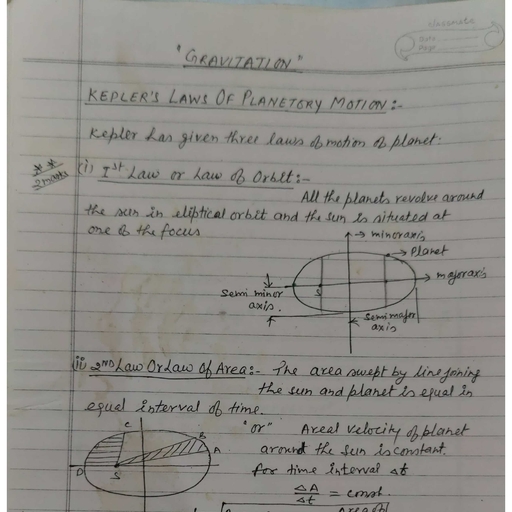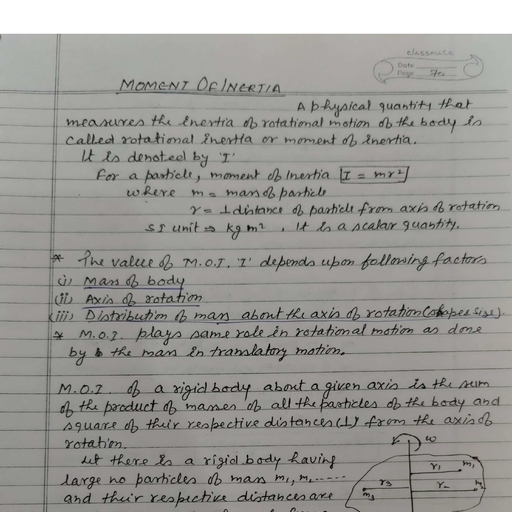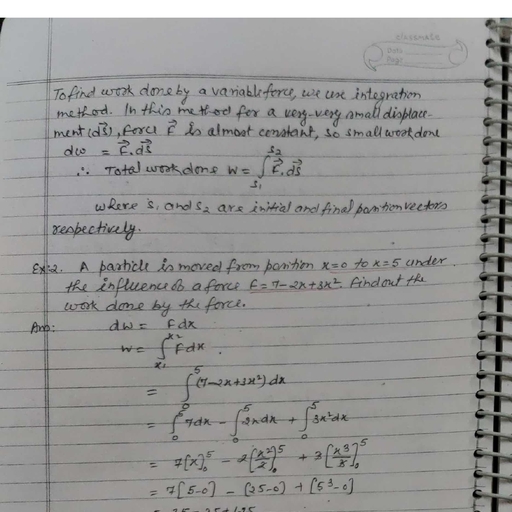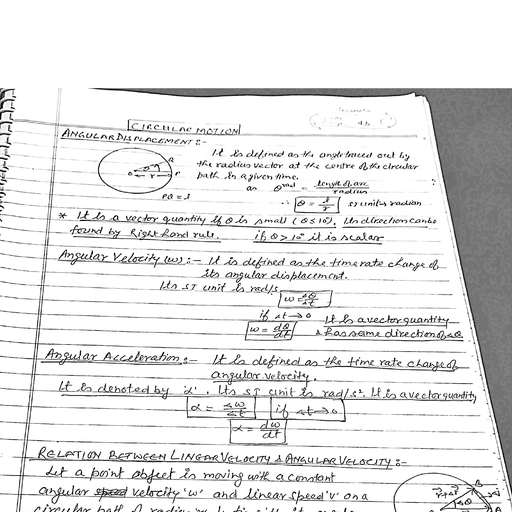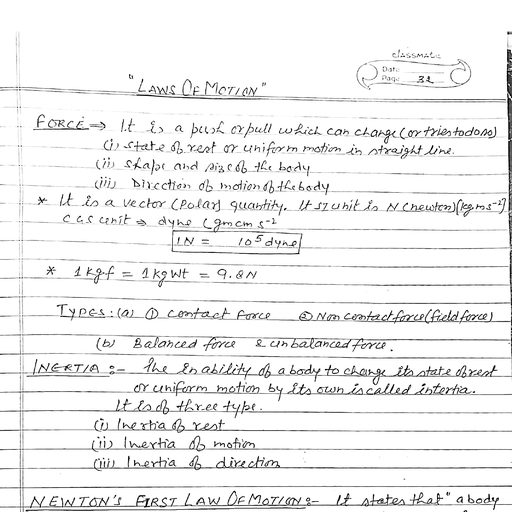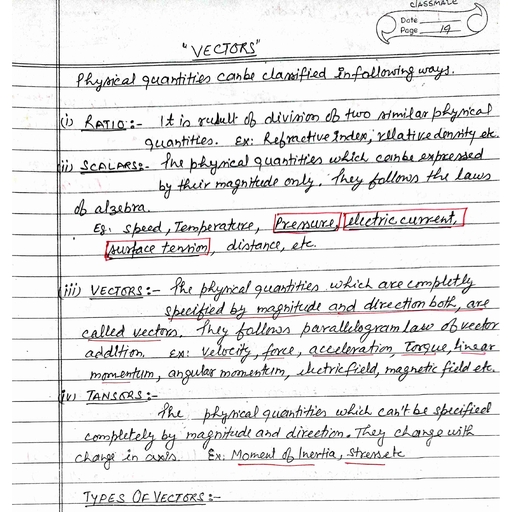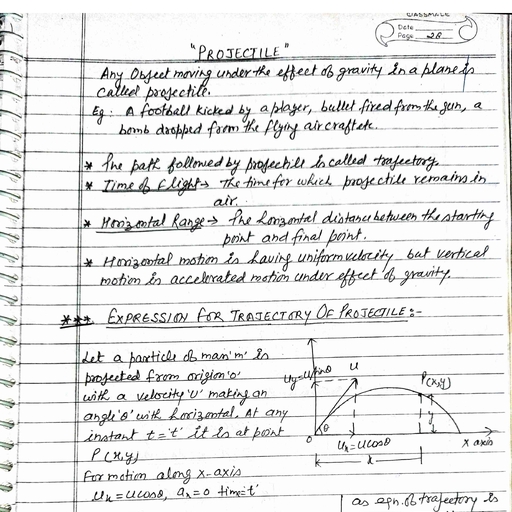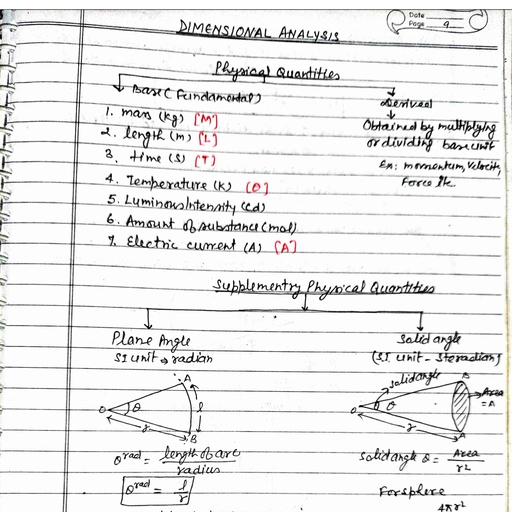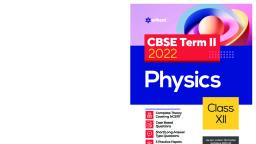Page 1 :
PART — | : ELECTROSTATICS, , ELECTRIC CHARGES, , ry P| 1, , , , » Electric Charges; Conservation of charge, Coulomb's law-force between two-point charges, forces between, multiple charges; superposition principle and continuous charge distribution. Electric field, electric field, due to a point charge, electric field lines, electric dipole, electric field due to a dipole, torque on a dipole in, uniform electric field. Electric flux, statement of Gauss's theorem and its applications to find field due to, infinitely long straight wire, uniformly charged infinite plane sheet., , Revision Notes, ( Electric Field and Dipole ), , , , , , Electric Charge, > Flectric charge is the property of a matter due to which, it experiences a force when placed in an electromagnetic, field., > Point charge is an accumulation of the electric charges at a point, without spatial extent., > Electrons are the smallest and lightest fundamental particles in an atom having negative charge as these are, surrounded by invisible force known as electrostatic field., > Protons are comparatively larger and heavier than electrons with positive electrical charge which is similar in, , , , , , , , , , , , , , , , , , , , , , , , , , strength as electrostatic field in an electron with opposite polarity. Scan th: Know, . 7 ‘ more about, > Two electrons or two protons will tend to repel each other as they carry like charges, negative this topic, and positive respectively. [oy, > The electron and proton will get attracted towards each other due to their unlike charges. ay, > The charge present on the electron is equal and opposite to charge on the proton. ei, Charge ona proton = + 1.6 x 10°C Hisense hatgee, and charge on an electron = - 1.6 x 101°C, Electrostatic Charge, > Electrostatic charge means the charge is al rest., . : « ‘ ae . ‘Scan to know, > Flectrostatic charge is a fundamental physical quantity like length, mass and time. hare about, : this topic, > Charge ona body is expressed as q = + ne ol, > The magnitude of charge is independent of the speed of the particle. re, » Based on the flow of charge across them, materials are classified as: ot, * Conductors - Allow electric charge to flow freely, e.g. metals Electric Field, , , , , , , , , , WWW.JEEBOOKS.IN, , , , Scanned with CamS
Page 3 :
ELECTRIC CHARGES AND FIELDS 3, , * Semi-conductors - Behave as the conductor or insulator depending on the number of free electrons and holes, availability. e.g. silicon, + Insulators - Do not allow electric charge to flowy, e.g, rubber, wood, plastic, etc., > Net charge on a body is given by:, * Charging by friction - Charging insulators, * Charging by conduction - Charging metals and other, conductors, * Charging by induction - Wireless charging, Charging by Rubbing, > On rubbing a glass rod and silk cloth piece together,, glass rod gets positively charged whereas silk cloth gets, negatively charged., » Ifaplastic rod is rubbed with wool, it becomes negatively, , charged. Neutral(sphere) A negative rod near by, Charging by Induction separates +ve and —ve charges, , > Charging by induction means charging without contact. =~,, é. lectrons, flowto the, ees wire, ‘Ground, , > If a negatively charged rod is brought near neutral, metal with insulator mounting, it repels free electrons, and attracts positive charges on metal., > Iffar end is connected to Earth by a wire, electrons will Witlyrodngarhy the negative With rod away the postive, flow towards ground while positive charges are kept °" may be discharged charges distribute evenly, captive by the rod, > When the rod is removed, the captive positive charge is distributed evenly., Properties of Electric Charge, Addition of charges, > Ifa system contains three point charges qy, q) and qy, then the total charge of the system will be the algebraic, addition of q,,q, and qy, ic., charges will add up., q=ntnt 4, , , , , , Conservation of charges, > Electric charge is always conserved. It is the sum of positive and negative charges present in an isolated system,, which remains constant., > Charge can neither be created nor destroyed in the process, but only exists in positive-negative pairs., Quantization of charges, > Flectric charge is always quantized i., electric charge is always an integral multiple of charge ‘’., , , , > Net charge q,,, of an object having N, electrons, N, protons and N,, neutrons is: Scan to Know, ‘more abou, Inet = —€N, + €N, + ON, = e(N, —N,) = = ne this topic, , , , > Neutron (12): m = 1.675 x 10°” kg; q = 0, > Proton (p): m = 1.673 x 10 kg; q = +1.6 x 10°C, > Electron (e): m = 9.11 x 10°! kg; q =-1.6 x 10°C, Coulomb's Law Electric Dipole, > The force of attraction or repulsion between two point charges q, and q) separated by a distance, ris directly proportional to product of magnitude of charges and inversely proportional to square of distance, between charges, written as:, , , , , , , , , , , , , , , , gllat_ 1 lalla!, , raul :, dnc, or, , , , , , , where,, , F = Force of attraction/repulsion between charges q, and q)., qu P= Magnitudes of charge 1 and charge 2 respectively, , r = Distance between charges qy, 42, , , , Constant whose value depends on medium where charges are kept. k =, , , , TE, , 1, , Ase =K’eg, k= ———, 4nK' eo, , £9 = Permittivity of vacuum = 8.854 x 10°? F/m, , Scanned with CamS
Page 4 :
4 Oswaal CBSE MCQss Question Bank Chapterwise for Term-I, PHYSICS, Class — XII, , K’ = Relative permittivity of medium or dielectric constant., , > For vacuum, relative permittivity, K’ = 1,, , > Ase = K’ &y, therefore force of altraction/repulsion between two electric charges q,, q) placed in vacuum and, medium will be:, , 14,4, 1 4,4, , 2 (vacuum) and F=. 493 (medium), Amege, >, , , , , , dney, , , , > The unit coulomb (C) is derived from the SI unit ampere (A) of the electric current., , > Currentis the rate a at which charge moves past a point or through a region, i= = , hence 1 C=(1 A) x (15)., dt a, , dq, dl, > The vector form of Coulomb force with ry, = unit vector from 4, to qp is given as, , 1 492%, , 4ne, , , , , , 1 q92>, Ee 3, , 2 and Fy =, Ane _, , , , , , Principle of Superposition, , > The force on any charge due to other charges at rest is the vector sum of all the forces on that charge due to the, other charges, taken one ata time., , , , > The individual forces are unaffected due to presence of other charges. ly ats Az, =" - Fi, > Force exerted by q, on 43 = F13 fe on, aah 6, > Force exerted by q,0n q3= F2s Fy t Pa, 4 js Oe, > Net force exerted on q3 is vector sum of Fis and F23 4¢_—__ x, , Electric field, > The space around a charge up to which its electric force can be experienced is called electric field., > Ifa test charge qg is placed at a point where electric field is F, then force on the test charge is F = qoE, , > The electric field strength due to a point source charge ‘q’ at an observation point‘ at E, a distance ‘r’ from the source charge is given by:, , , , in br,, 4m, , = 4, 4neg r, , , , r or E=, , , , > The unit of electric field is N/C, > Electric field inside the cavity of a charged conductor is zero., , > Ifacharged/uncharged conductor is placed in an external field, the field in conductor, is zero., , > Incase of charged conductor, electric field is independent of the shape of conductor. a VA, Electric field lines \, ~» ee, , > Electric field lines are imaginary lines which originates from the positive charge and towards, , negative charge. Re, > Direction of electric field lines around positive charge is imagined by positive test charge qo 7] INN, , located around source charge., > Flectric field has same direction as force on positive test charge, > Electric field lines linked with negative charge are directed inward described by force, on positive test charge 49, > The electric field lines never intersect each other., > Strength of electric field is encoded in density of field lines., Electric Dipole, , > The system formed by two equal and opposite charges separated by a small distance 4g G) © =, is called an electric dipole., 2 e ‘ : --5-- >, > The electric field exists due to a dipole. d, , , , Scanned with CamS
Page 5 :
ELECTRIC CHARGES AND FIELDS 5, , > The force ona dipole in a uniform electric field is zero in both stable as well as unstable equilibrium., > The potential energy of a dipole in an uniform electric field is minimum for a stable equilibrium and maximum, for an unstable equilibrium., Torque ona dipole, > Ina dipole, when net force on dipole due to electric field is zero and center of mass of dipole remains fixed, the, forces on charged ends produce net torque t about its center of mass., , 1 = Fdsin 9 = gE dsin 8 = pEsin 8, , Pe BME, , * If 6 = 0° or 360°, dipole exists, , , , n stable equilibrium state., , , , * If 0 = 180°, dipole exists in an unstable equilibrium state. ay, > In uniform electric field, dipole experiences torque, net force on dipole is zero. 0, > In uniform electric field, dipole experiences a rotatory motion., > Innon-uniform electric field, dipole experiences torque and net force. = ——E—>, , > In non-uniform electric field, dipole experiences rotatory and translatory F597, motion, * The torque aligns dipole with electric field and it becomes zero., * The direction of torque is normal to the plane going inward, , Electric Dipole Moment, > Dipole moment is a vector quantity whose unil is coulomb-metre (Cm)., > Dipole moment vector of electric dipole is p> = 42a between pair of charges q, -q, along the line, separated by, distance 2a., Electric field due to a dipole, , > For point P at distance r from centre of dipole on charge q, for r>>a, total field at point P is, , , , E 4qa ., 4neor®, 7 —, Exq p Ey :, <-->, 1 (ifa<<r) a, , , , Amey 4, , » For point P on the equatorial plane due to charges +q and -q, electric field, of dipole at a large distance,, , , , _ 1p, , - neg 1, , , , C Gauss's Theorem and its Applications ), , , , Electric Flux, > Flectric flux is proportional to algebraic number of electric field lines passing through the surface, outgoing lines, with positive sign, incoming lines with negative sign., > Due to arbitrary arrangement of electric field lines, electric flux can be quantify as 6;=EA, , > If vector A is perpendicular to surface, magnitude of vector A parallel to electric field is sh A, Acos 0 \, E, Ay = Acos 0, 6, = FAy = EAcos 6 ZA, , y Innon-uniform electric field, the flux will be o;=SFdA, , Continuous Charge Distribution, , > Itis a system in which the charge is uniformly distributed over the material. In this system,, , th, , infinite number of charges are closely packed and have minor space among, them. Unlike the, discrete charge system, the continuous charge distribution is uninterrupted and continuous, in the material. There are three types of continuous charge distribution system., , WW. JEEBOOKS.IN, , Scanned with CamS


